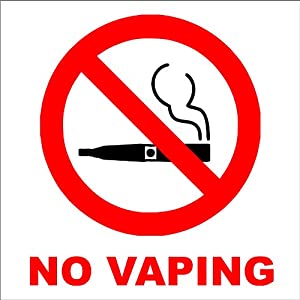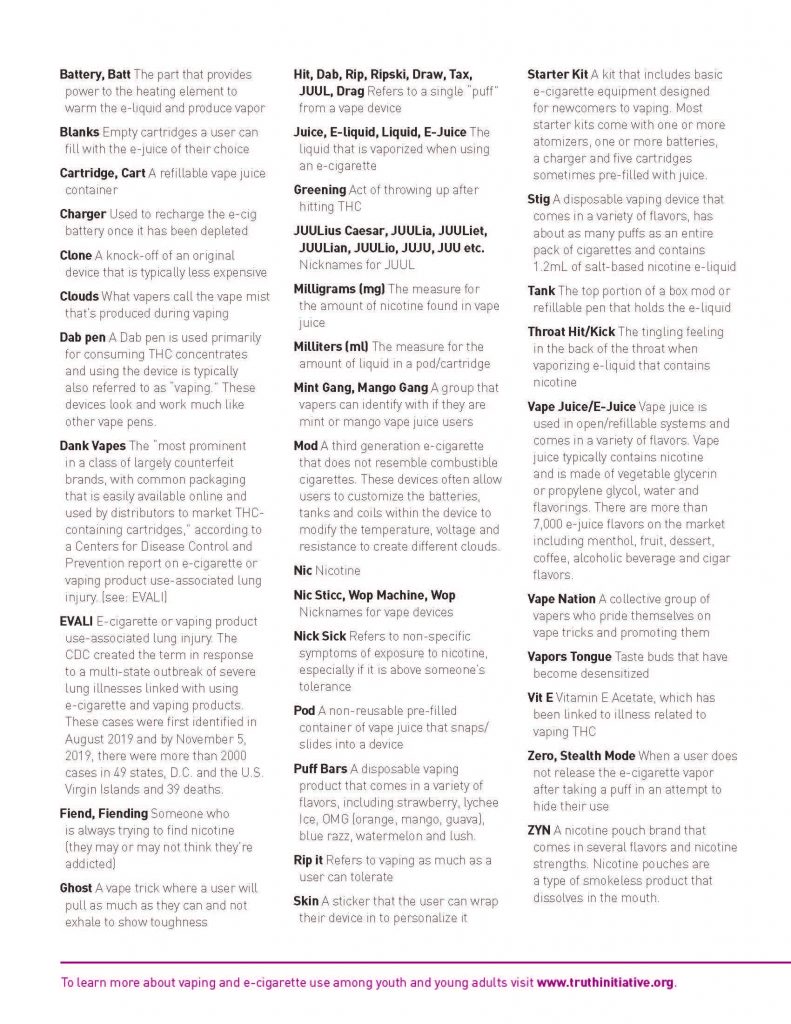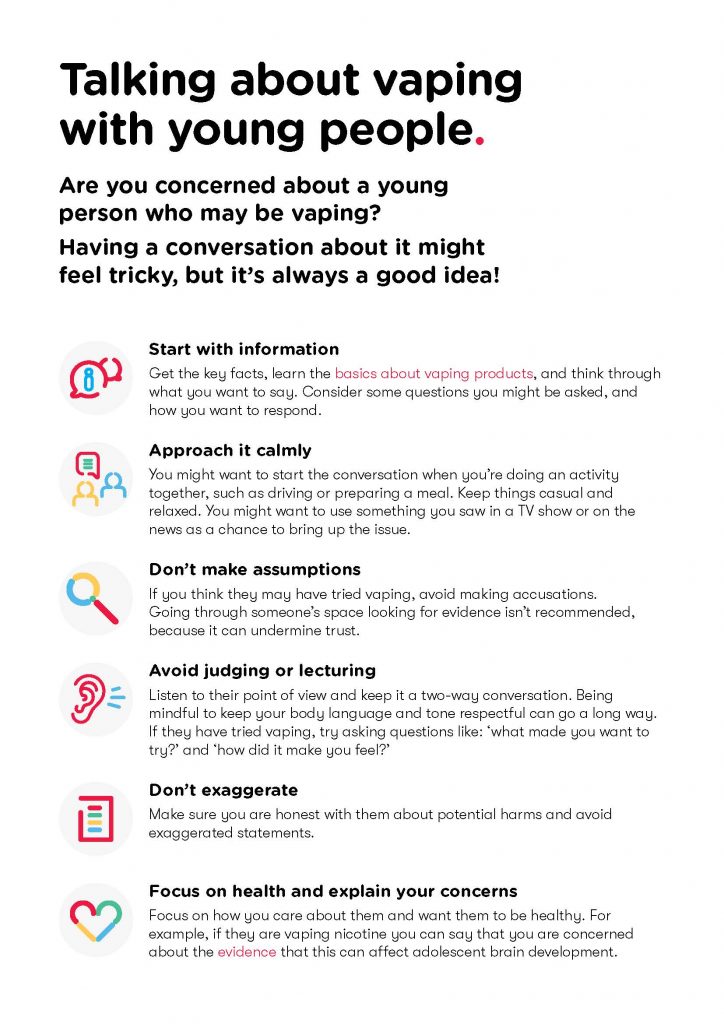Important information to parents about vaping

“Vaping” has become an increasing issue of concern in Australian schools and the broader community, with the Alcohol and Drug Foundation indicating that vaping by young people has increased in recent years. It is important that all parents are informed about this issue and are provided with the facts so they can have conversations with their children about the dangers of vaping. We have identified that some students may perceive that “vapes” and “vaping” are harmless, however, this is not the case.
What is a “vape”? A “vape” is an electronic cigarette. An electronic cigarette or “e-cigarette” is an electronic device that simulates tobacco smoking. It consists of an atomizer, a power source such as a battery, and a container such as a cartridge or tank. Some e-cigarettes can be charged in a laptop’s USB port. E-cigarettes heat a liquid, known as an “e-liquid” containing nicotine (extracted from tobacco), flavourings and/or other chemicals to create an aerosol or “vapour” that the user inhales. As such, using an e-cigarette is often called “vaping”.
What do “vapes” look and smell like? Vapes come in many different shapes and sizes. Please see attached for some images of what they may look like. Some vapes appear to be marketed specifically at young people with animated illustrations on the cover. Others can look like highlighters, pens or confectionary. The e-liquid can come in many different flavours. Some examples are: bubble-gum, watermelon and many other fruit flavours, vanilla and chocolate, therefore the smell produced by the vape can be reminiscent of these. Some of the products are called “puff bars”.
What are the health ramifications? E-cigarettes are linked to severe lung illness – you can read more about this in a statement from the Chief Medical Officer and State and Territory Chief Health Officers: https://www.health.gov.au/news/e-cigarettes-linked-to-severe-lung-illness
It is important to note that e-liquids, even when labelled ‘nicotine free’, can contain harmful and widely varying substances such as nicotine, heavy metals, volatile organic compounds and cancer-causing chemicals. These chemicals can affect adolescent brain development. You can read more about the health implications for young people here: https://www.rch.org.au/kidsinfo/fact_sheets/E-cigarettes_and_teens/
What are the legal ramifications? Under the Tobacco and Other Smoking Products Act 1998 (Tobacco Act), electronic cigarettes are smoking products and subject to the laws in place for tobacco cigarettes.
These devices cannot be:
- sold to children under 18 years of age
- used in existing no-smoking indoor and outdoor places
- advertised, promoted or displayed at retail outlets
- provided for sale in a vending machine.
Electronic cigarettes that contain liquid nicotine are regulated under Queensland’s Health (Drugs and Poisons) Regulation 1996 (HDPR), on the basis that liquid nicotine is classified as a ‘Dangerous Poison’ under Schedule 7 of the federal ‘Poisons Standard’, which is published on the Therapeutic Goods Administration (‘TGA’) website. Accordingly, in Queensland, liquid nicotine is:
- A ‘S7 poison’ and a ‘regulated poison’ under the HDPR; It is an offence for a person to manufacture, obtain, possess, prescribe, dispense, sell, advertise, use or destroy nicotine, unless the person is specifically authorised or holds an approval under the HDPR. A significant penalty applies.
Electronic cigarettes containing liquid nicotine can be safely disposed of at a community pharmacy or a local public health unit.
To report illegal sale or possession of electronic cigarettes containing liquid nicotine, call 13 QGOV (13 74 68).
Please refer to the Queensland Government Health site for more information: https://www.health.qld.gov.au/public-health/topics/atod/tobacco-laws/electronic-cigarettes
Calamvale Community College takes this health concern very seriously and we are addressing this at the College level by working with our students to educate them about the dangers of inhaling dangerous chemicals. We respond to any reports of students possessing vapes or students being involved in vaping in accordance with our College’s Responsible Behaviour Plan for Students (available on the website), while also providing education and support. Vapes are a prohibited item at the College, in the same category as cigarettes and other smoking paraphernalia and smoking products. Students can seek support from the College’s Guidance Officers, or make reports to their Year Level Deputy Principal if they have concerns.
We encourage you to have a conversation with your child about e-cigarettes and vaping. Please see attached for some guidelines about how you might approach this conversation. If you have any concerns about this issue and you would like to follow up further, please be in contact with your child’s Year Level Deputy Principal or Guidance Officer.
Thank you for working with us to educate our young people so they can make good decisions for themselves that promote wellbeing, health and happiness.













